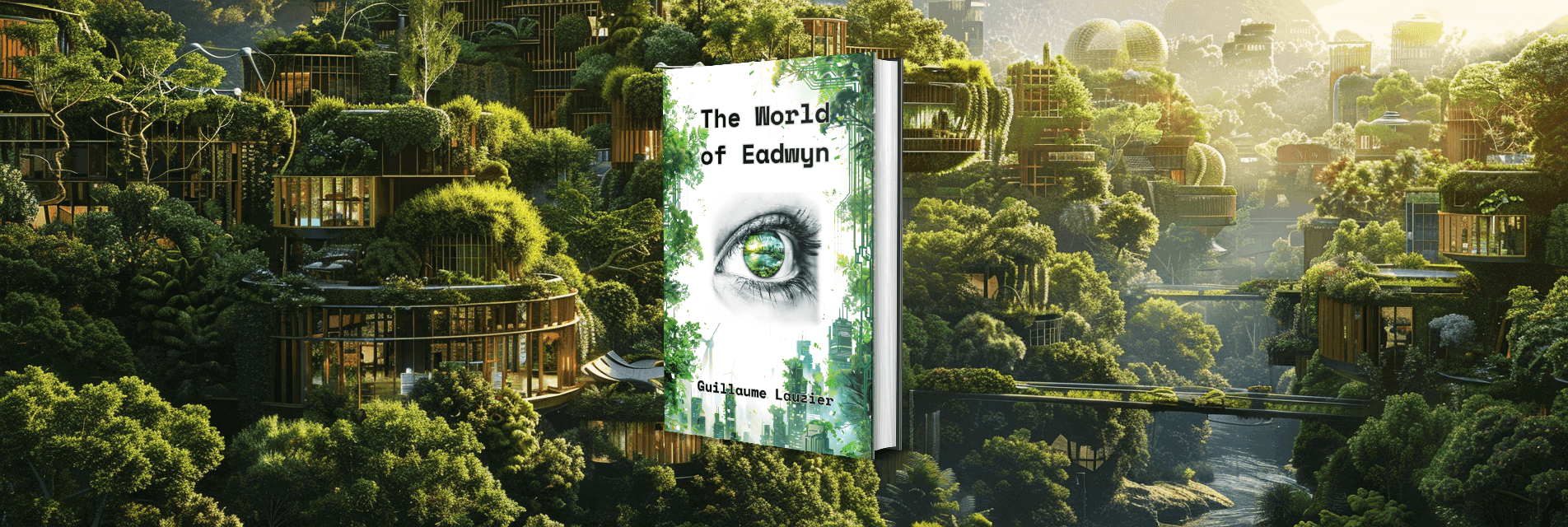The Book

Summary of The World of Eadwyn by Guillaume Lauzier
The World of Eadwyn presents a speculative vision of a future where nature, technology, and society are intricately interwoven to create a sustainable, decentralized world. In this setting, architecture breathes with living materials, streets adapt to environmental needs, and energy flows from renewable sources integrated into the ecosystem. The story centers on Eadwyn, a contemplative innovator shaped by a past of displacement and exclusion, who drives a quiet revolution toward a harmonious, equitable society.
Key Themes and Narrative
- Localized Economy: The world replaces global supply chains with self-sustaining communities, producing food, energy, and goods locally to foster sustainability and interdependence.
- Technological Integration: AI and blockchain support daily life—managing resources and ensuring transparency—without overshadowing human agency.
- Regenerative Nature: Bio-engineered buildings, circular resource systems, and regenerative agriculture not only preserve but actively restore the environment.
Eadwyn’s journey begins with an idealistic vision of perfect harmony between technology and nature. However, crises—such as energy grid failures and agricultural collapses—reveal the fragility of this dream, exposing systemic vulnerabilities to environmental shifts and overreliance on technology.
Evolution and Resolution
Confronted by these challenges, Eadwyn pivots from perfection to resilience. They propose “Resilience Nodes”—autonomous, adaptable units for energy, food, and governance—and emphasize mutual aid, urging communities to collaborate rather than compete. This shift reflects a deeper understanding: sustainability is not a static state but a dynamic balance that embraces imperfection and adapts to uncertainty.
Philosophical Conclusion
The narrative closes with a reflective question: How do we live sustainably in a changing world? Eadwyn’s speculative societal model envisions:
- Decentralized Economies: Local hubs networked for mutual support.
- Regenerative Technology: Tools that empower and heal rather than exploit.
- Participatory Governance: Collaborative decision-making rooted in equity.
This hopeful, evolving vision offers no final answers but a path forward—where resilience, collaboration, and stewardship guide humanity through an uncertain future.